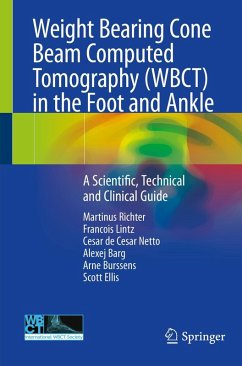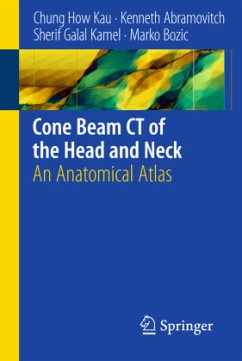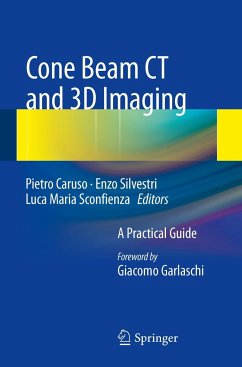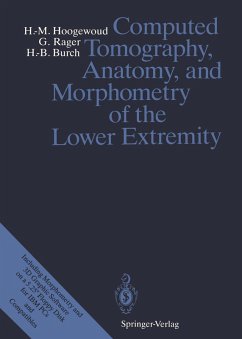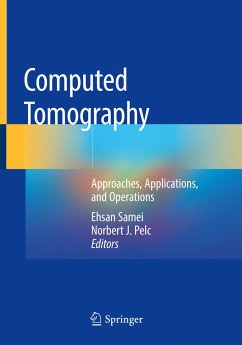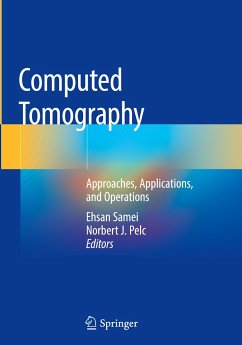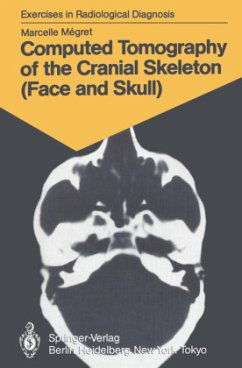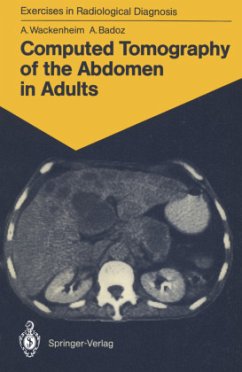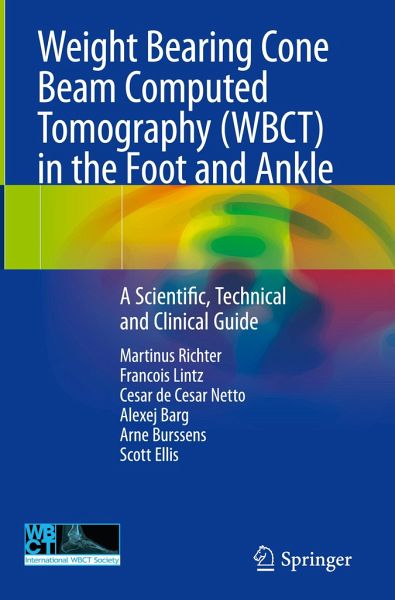
Weight Bearing Cone Beam Computed Tomography (WBCT) in the Foot and Ankle
A Scientific, Technical and Clinical Guide
Versandkostenfrei!
Versandfertig in 6-10 Tagen
83,99 €
inkl. MwSt.
Weitere Ausgaben:

PAYBACK Punkte
42 °P sammeln!
This scientific, technical and clinical guide to Weight Bearing Cone Beam Computed Tomography (WBCT), written by the board of the International WBCT Society, presents all of the relevant content to date on the development, implementation, interpretation and clinical application of WBCT for the foot and ankle. Part One describes the history of the development of, and need for, WBCT as an imaging option and a scientific overview of the procedure. Part Two is an exhaustive scientific background, comprised of 16 landmark studies, describing its advantages for selected foot and ankle injuries and d...
This scientific, technical and clinical guide to Weight Bearing Cone Beam Computed Tomography (WBCT), written by the board of the International WBCT Society, presents all of the relevant content to date on the development, implementation, interpretation and clinical application of WBCT for the foot and ankle.
Part One describes the history of the development of, and need for, WBCT as an imaging option and a scientific overview of the procedure. Part Two is an exhaustive scientific background, comprised of 16 landmark studies, describing its advantages for selected foot and ankle injuries and deformities (both congenital and acquired). With this science as context, Part Three includes chapters on the technical aspects and necessary background for WBCT, introduces the different devices, and provides insight into the actual measurement possibilities, including the initial software solutions for automatic measurements. Current clinical applications via case material are illustrated in atlas-like fashion in the next chapter, and a final chapter on future developments explores further applications of WBCT, such as dynamic scans and measurements or hologram-like visualization.
The first book publication of its kind on this exciting and developing imaging modality, Weight Bearing Cone Beam Computed Tomography (WBCT) in the Foot and Ankle will be an excellent resource for orthopedic and foot and ankle surgeons, radiologists, and allied medical professionals working in this clinical area.
Part One describes the history of the development of, and need for, WBCT as an imaging option and a scientific overview of the procedure. Part Two is an exhaustive scientific background, comprised of 16 landmark studies, describing its advantages for selected foot and ankle injuries and deformities (both congenital and acquired). With this science as context, Part Three includes chapters on the technical aspects and necessary background for WBCT, introduces the different devices, and provides insight into the actual measurement possibilities, including the initial software solutions for automatic measurements. Current clinical applications via case material are illustrated in atlas-like fashion in the next chapter, and a final chapter on future developments explores further applications of WBCT, such as dynamic scans and measurements or hologram-like visualization.
The first book publication of its kind on this exciting and developing imaging modality, Weight Bearing Cone Beam Computed Tomography (WBCT) in the Foot and Ankle will be an excellent resource for orthopedic and foot and ankle surgeons, radiologists, and allied medical professionals working in this clinical area.



